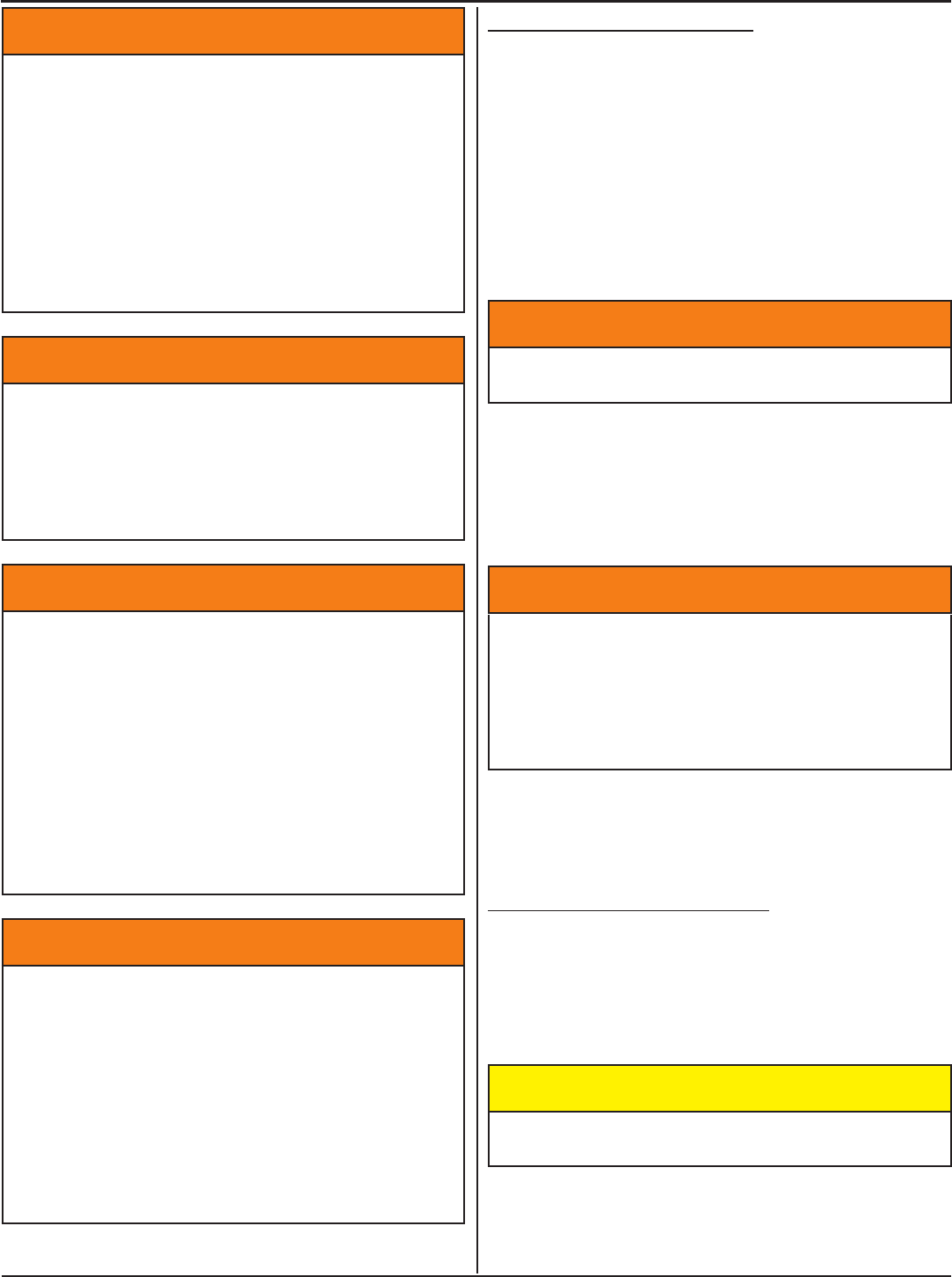Operating Guide

38
^ WARNING
Electrocution hazard.
Dump body coming near or contacting
power lines can cause electrocution.
Electrocution can occur without contact.
Verify there are no overhead power lines
over or near the trailer before raising dump
body.
^ WARNING
A soft and/or uneven surface may cause
tow vehicle and trailer to tip over when
dump body is raised.
Raise dump body ONLY if tow vehicle and
trailer are both on a rm and level surface.
^ WARNING
An overloaded trailer or improperly
distributed load can result in death or
serious injury.
An overloaded trailer can cause hydraulic
system to malfunction, resulting in dump
body falling.
A load that is improperly distributed in the
trailer can result in the trailer tipping over
when the dump body is raised.
^ WARNING
An overloaded trailer can result in loss of
control of the trailer, leading to death or
serious injury.
Do not exceed the trailer Gross Vehicle
Weight Rating (GVWR) or an axle Gross
Axle Weight Rating (GAWR).
Do not load a trailer so that the weight on
any tire exceeds its rating.
5.2 loadIng fIxed loadS
Fixed loads include palletized materials, skid-steer
loaders, mowers, etc.
Fixed loads that are to be carried or dumped should be
loaded evenly throughout the trailer. Too much load in
the front portion will strain and possibly overload the
hydraulic hoist. Too much load in the rear can lead to
trailer swaying at highway speeds.
1. Couple the trailer to the tow vehicle.
^ WARNING
Trailer must be coupled to tow vehicle
before loading trailer.
2. Park the tow vehicle and trailer on a rm and
level surface, both front-to-back and side-to-side.
Attempting to load on a soft or uneven surface may
cause the trailer to overturn, which can result in
death or serious injury.
^ WARNING
Load can suddenly move or topple, which
can result in death or serious injury.
Do not load or unload trailer unless
coupled to tow vehicle and is on a rm and
level surface.
3. Inspect the tie down rings for any damage or
cracks.
4. Clear the area around the trailer.
5.2.1 rear loadIng equIpment
1. Lower rear stabilizers (if equipped) or place blocking
under rear of trailer so the weight of the cargo does
not raise the front of the trailer during loading.
2. Open both rear doors and secure open with door
hold backs.
^ CAUTION
Use a safe lifting procedure to avoid injury
when handling ramps.
3. Remove ramps from storage position and place
on rear of trailer. Adjust ramp position to align with
equipment tires or tracks.
Loading And Unloading










